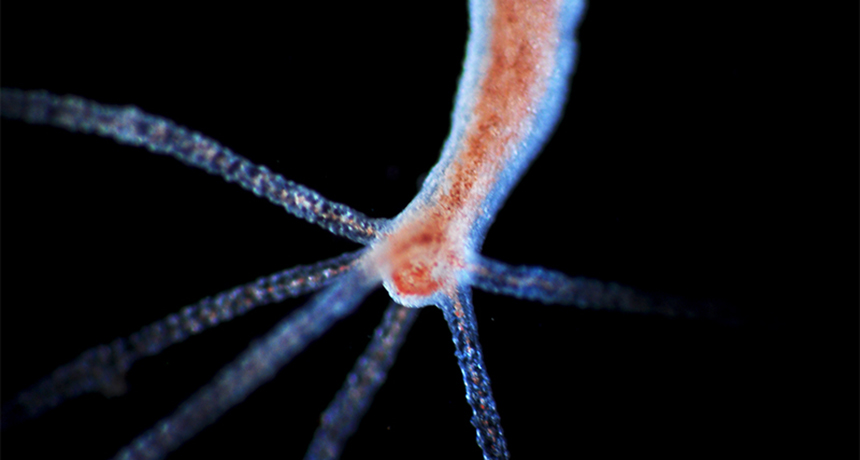How hydras know where to regrow their heads

Hydras, petite pond polyps known for their seemingly eternal youth, exemplify the art of bouncing back (SN: 7/23/16, p. 26). The animals’ cellular scaffolding, or cytoskeleton, can regrow from a slice of tissue that’s just 2 percent of the original hydra’s full body size. Researchers thought that molecular signals told cells where and how to rebuild, but new evidence suggests there are other forces at play.
Physicist Anton Livshits and colleagues at the Technion-Israel Institute of Technology in Haifa genetically engineered Hydra vulgaris specimens so that stretchy protein fibers called actins, which form the cytoskeleton, lit up under a microscope. Then, the team sliced and diced to look for mechanical patterns in the regeneration process.
Actin fibers in pieces of hydra exert mechanical force that lines up new cells and guides the growth of the animal’s head and tentacles, the researchers found. Turning off motor proteins that move actin stopped regeneration, and physically manipulating actin fiber alignment resulted in hydras with multiple heads. Providing hydras with further structural stability encouraged tissue slices to grow normally. Both mechanical and molecular forces may mold hydras in regeneration, the researchers report in the Feb. 7 Cell Reports.
When researchers anchored rings of hydra tissue to a wire (right), they found that the added mechanical stability made a hydra grow normally along one body axis, and thus grow one head. Without this stability, the actin scaffolding was more disrupted and the animal grew two heads (left).